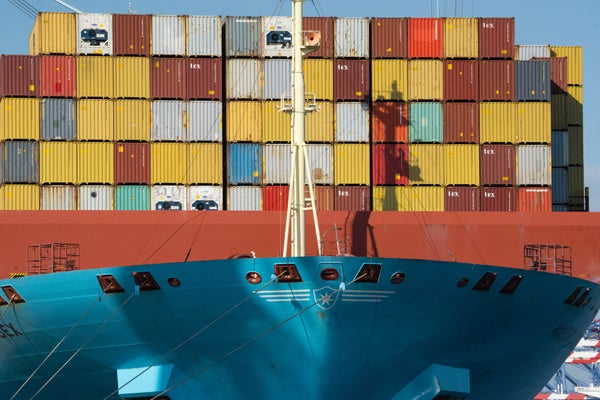As more world leaders consider levying border taxes on climate-damaging goods, a new study looks at ways it can be done in countries—including the United States—that haven’t established a domestic market for carbon emissions.
The findings are timely. European Union officials this summer set in motion plans for the world’s first carbon border tariff. U.S. lawmakers responded last month with their own border tax proposal.
How these efforts play out will have a significant impact on both the international trade network and the global fight against climate change.
On supporting science journalism
If you're enjoying this article, consider supporting our award-winning journalism by subscribing. By purchasing a subscription you are helping to ensure the future of impactful stories about the discoveries and ideas shaping our world today.
A 12-page study published last week by Resources for the Future, a nonprofit research organization based in Washington, offered a road map for how U.S. officials might craft a border tax without relying on an internal market for carbon emissions.
The proposal in many ways mirrors legislation put forward last month by Sen. Chris Coons (D-Del.) and Rep. Scott Peters (D-Calif.). Their bill would levy a fee on imported pollution by assessing the costs U.S. producers must pay to comply with current rules and regulations.
Resources for the Future suggested an exemption for imported emissions that are comparable to the emissions in a given sector in the United States. The United States then would apply a price on the imported emissions that are above that exemption level based on the marginal cost—the cost it takes to abate the most expensive ton of carbon.
“The idea is you’re trying to encourage reductions down to the U.S. level based on that marginal cost, so everybody would do the same sorts of things that are cheaper up to that price … and then they’d be exempted [from the fee] just like producers in the United States,” said William Pizer, a senior fellow at Resources for the Future and a co-author of the study.
That provides a better incentive for countries to do what the United States is doing and charges them effectively what producers in the United States are paying.
Those kinds of incentives are critical to the global campaign against climate change.
Border carbon adjustments, as they’re commonly known, slap a fee on carbon-intensive goods entering countries where domestic producers are subject to more stringent climate policies and pay a cost to meet them.
The measure is an attempt to ensure both foreign and domestic producers face the same costs and incentives to reduce emissions. Without them, businesses might move production to a country where the cost is lower, a measure known as carbon leakage since it “leaks” those emissions from one country to another without reducing them.
Recognizing this issue, the European Union—which prices carbon through its emissions trading system—introduced a border adjustment proposal July 14 that would take full effect in 2026. The effort has attracted attention from economists and traders worldwide, but analysts have said border adjustments are critical to addressing global warming.
“Any time you have something that is giving people a reason to create trade barriers, economists are going to be worried,” Pizer said. “But the level of concern appropriate about what’s going on with climate change means that some things that may have seemed off-limits now have to be part of the conversation.”
Ultimately, Resources for the Future’s research shows that border carbon adjustments can be designed to address the nuances of different climate policies, including those not based on a carbon price.
The policy does work better if it has a price somewhere in it, Pizer said. As an example, he pointed to some versions of a clean energy standard that include a market for clean energy credits that would be tradeable or renewable portfolio standards that allow for alternative compliance payments if companies don’t meet their obligations.
“Thinking about real world climate polices and the intersection with trade is a lot more complicated than the stylized world where everybody has a carbon tax,” said Pizer.
But it’s going to have to be dealt with in a world where carbon taxes are not the dominant policy countries are pursuing, he added.
“There are better and worse ways to do that, and it is going to take more thought,” Pizer said. “But we’ve started down this road of thinking about how you would design it.”
Reprinted from E&E News with permission from POLITICO, LLC. Copyright 2021. E&E News provides essential news for energy and environment professionals.
